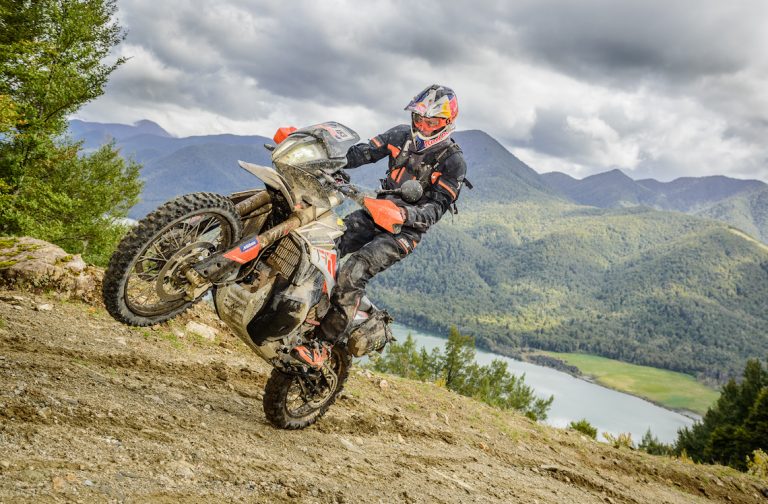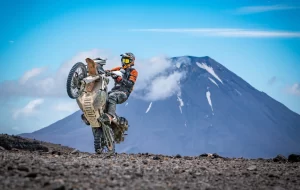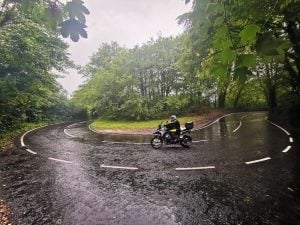Do you want to learn how to ride like a pro off-road? To drift around gravel corners with ease, pop wheelies for fun, and even jump a 200kg adventure bike? If the answer is yes then you’ve come to the right place.
I caught up with adventure biking superstar Chris Birch to discover his top tips for getting the most out of your adventure bike off road.
If you’re not familiar with Chris head to Youtube or check out the video at the bottom of this article. Look for the rider treating a large-capacity KTM like a lightweight motocross bike.
Chris is more than an online sensation though, he’s also an accomplished off-road racer. His career highlights include seven podiums at the Red Bull Romaniacs enduro race, including a win in 2010. He also placed second in the rookie class of the Dakar Rally in 2012.
Chris now runs a coaching school in his home country of New Zealand to pass on his skills. However, for those of us who can’t make it all way the southern hemisphere, he has created a series of instructional videos online called Say No To Slow. It shows riders how to master the techniques needed to ride like a pro.
So, without further ado, it’s over to Chris.
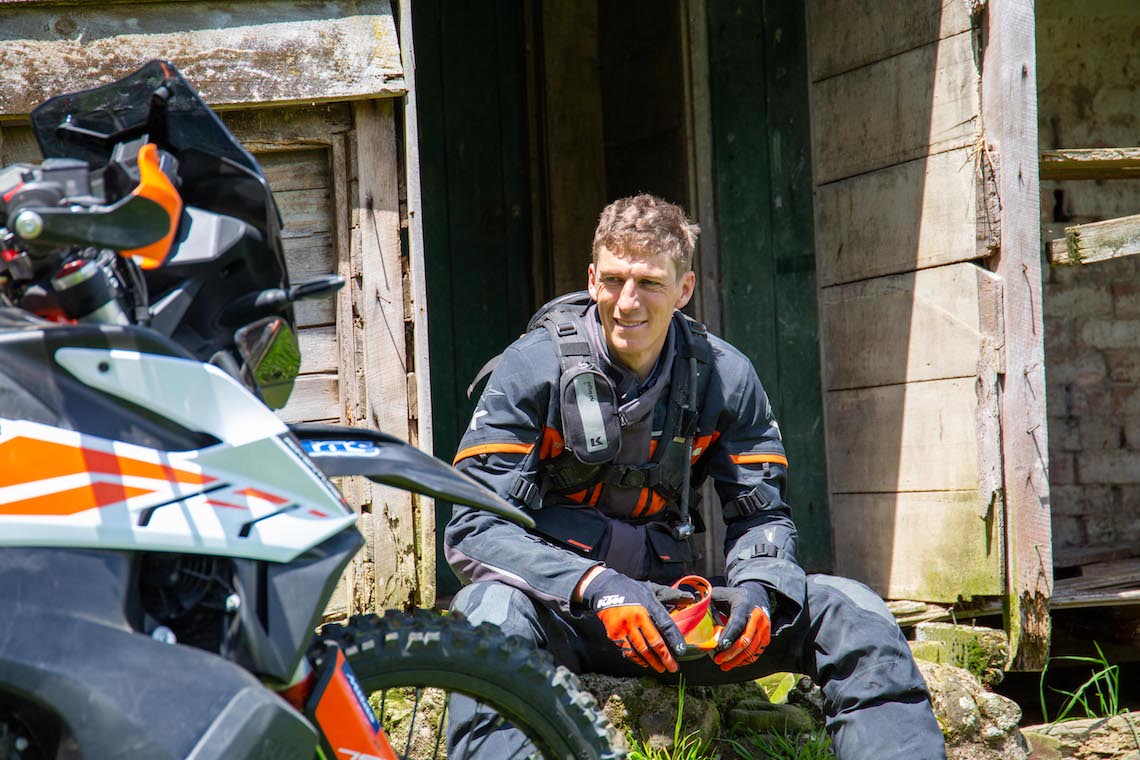
What are the three top tips you’d give to someone new to riding off-road on their adventure bike?
“My first tip would be to invest in good, off-road focussed tyres. This will give you so much more confidence, and improve your safety, as you learn the techniques of off-road riding.
“I’d also advise riders to start off easy. Find a nice gravel car park or some sort of open area to practice in and get the feel for how a bike behaves off-road as you practice some low-speed manoeuvres. Be patient with yourself and give yourself time to develop the skills.
“Finally, seek out some good advice. Go to a training school, watch my training videos, or simply get help from a more experienced rider. There is a lot to learn, so make sure you’re getting taught it correctly first time around and learn as fast as you can.”
How should I prepare my adventure bike for riding off-road?
“Like I said before, tyres are everything off-road. Trying to learn off-road riding with more street biased tyres is very difficult, and can even be dangerous in the wrong conditions. I like to think of the bike’s tyres like its shoes. You wouldn’t expect to go hiking in dancing shoes, so make sure your bike is similarly well-equipped!
“Depending on how hard off-road you want to go some extra protection is a good idea. Not much, just a skid plate and maybe some crash bars. People can get carried away with this and end up turning the bike into a tank with 20kg of guards fitted to save something that costs less to replace than the guards do.
“Also don’t forget to protect yourself. Investment in the right off-road focussed riding gear is really important. Riding off-road in road boots is simply dangerous, and I encourage people to use MX style boots to protect their ankles and lower legs from getting damaged.
“Finally, investing in some lighter, more ventilated clothing will stop you from over-heating on the trails. You work a lot harder off-road, with a lot less air flow than on the road, and it can take its toll if you’re wearing heavy gear.”
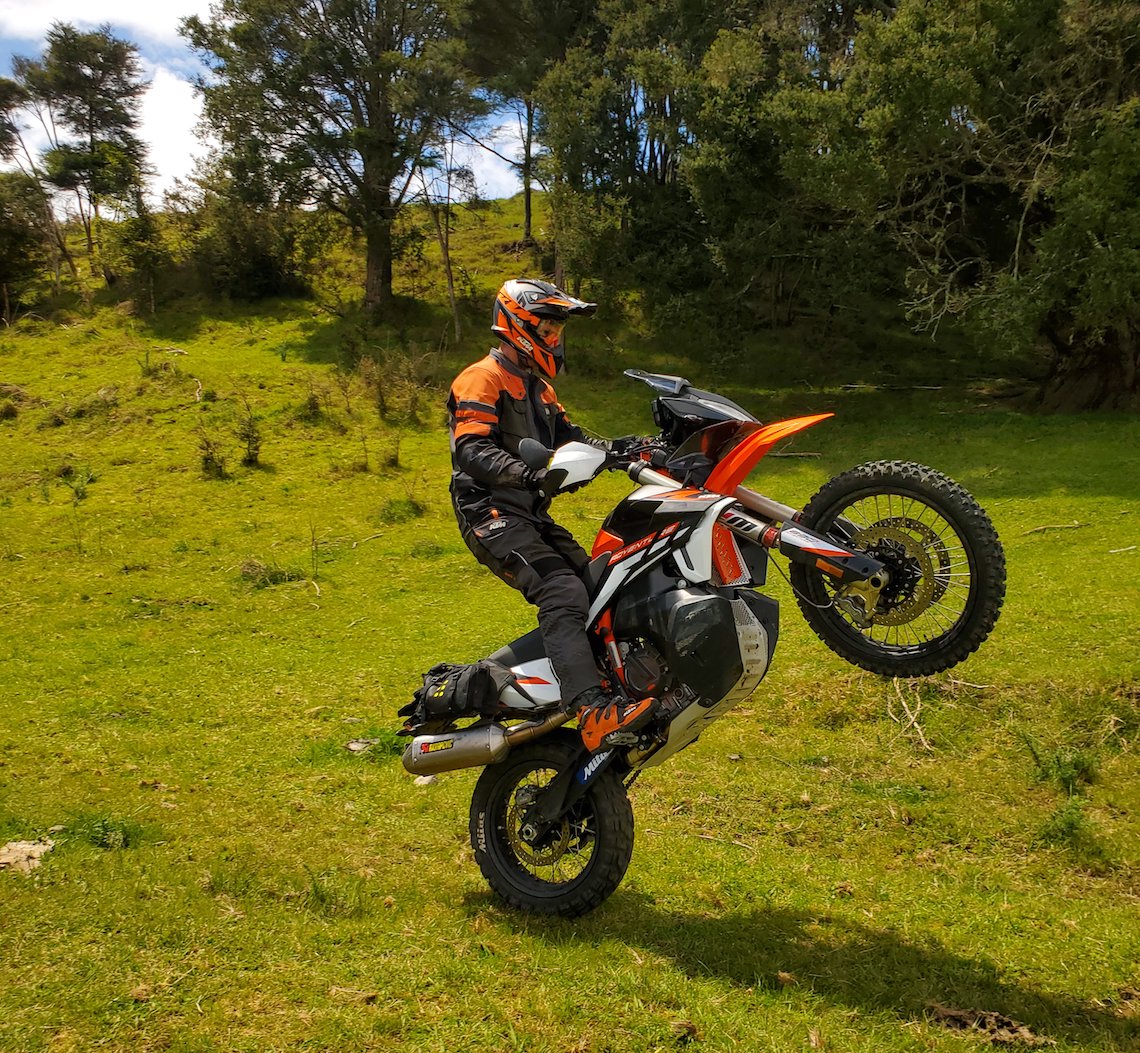
Are there any common bad habits you often see in adventure bike riders?
“I think the most common ‘bad’ habit is a weird standing position. A lot of the riders I teach are not using their hips enough and are riding with their butts tucked under them. At the riding school we’ve nicknamed this tucked-butt syndrome.
“Tucked-butt syndrome can result in back pain, neck pain, instability, a lack of flexibility and the need for big bar risers. It’s a bad habit that we teach riders out of at all the schools and our Say No to Slow video training series on Youtube.”
Are there any different skills to learn on a larger capacity adventure bike compared to smaller machines?
“Definitely. There is an awful lot to be learned from riding smaller dirt and trail bikes. It’s a great way to start off and build your confidence off-road.
“However, there are a lot of techniques that are different on the big bikes. There’s a bit too much to say here, but as I said earlier seek out some good advice and you’ll find yourself on the right path.”
What terrain do you find the hardest to ride?
“The hardest terrain for me on the big bikes is definitely slippery mud. The loss of traction and momentum is very noticeable on a heavier bike.
“That being said, I seem to spend an awful lot of time riding it here in New Zealand. Mainly that’s because there’s a lot of slippery clay around my home. When it’s wet it’s hard to walk on, let alone get a 200kg bike to do what you want!
“It takes a lot of technique, determination and a good sense of humour in those conditions. The tyres are constantly sliding and I’m working really hard. For me that’s definitely the most challenging situation and really is when my big adventure bike feels at its biggest.”
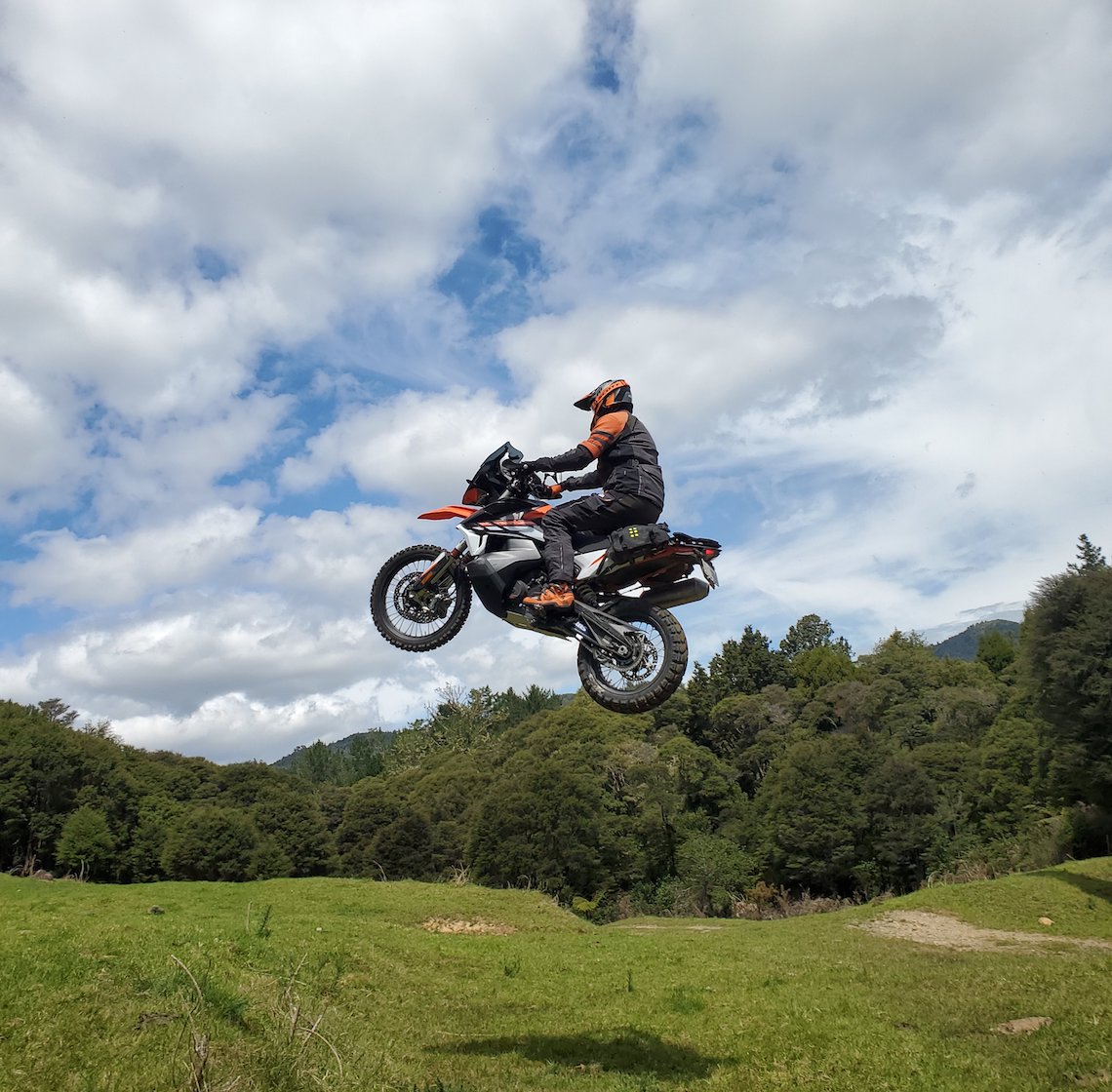
Are there any types of riding terrain that make you nervous?
“I don’t like riding in dust. It seems like when it gets dusty luck starts to get involved and I don’t want to play that game.
“It’s normally only an issue in racing. In the real world if it’s dusty when I’m out on my adventure bike I just slow down until it clears. But the dust at Dakar was terrifying at times and the speed some guys can hold through it is just incredible. Brave men for sure.”
And finally, how did you get so good at riding off-road?
“Just a lifetime of messing about on bikes, trials bikes, enduro bikes, BMX bikes, mountain bikes, unicycles. Pretty much anything on wheels.
“I have always loved it, always wanted to get better and to try and understand what I have to do to get better. The best thing is there is still so much so figure out and to get better at that it can never get boring.”
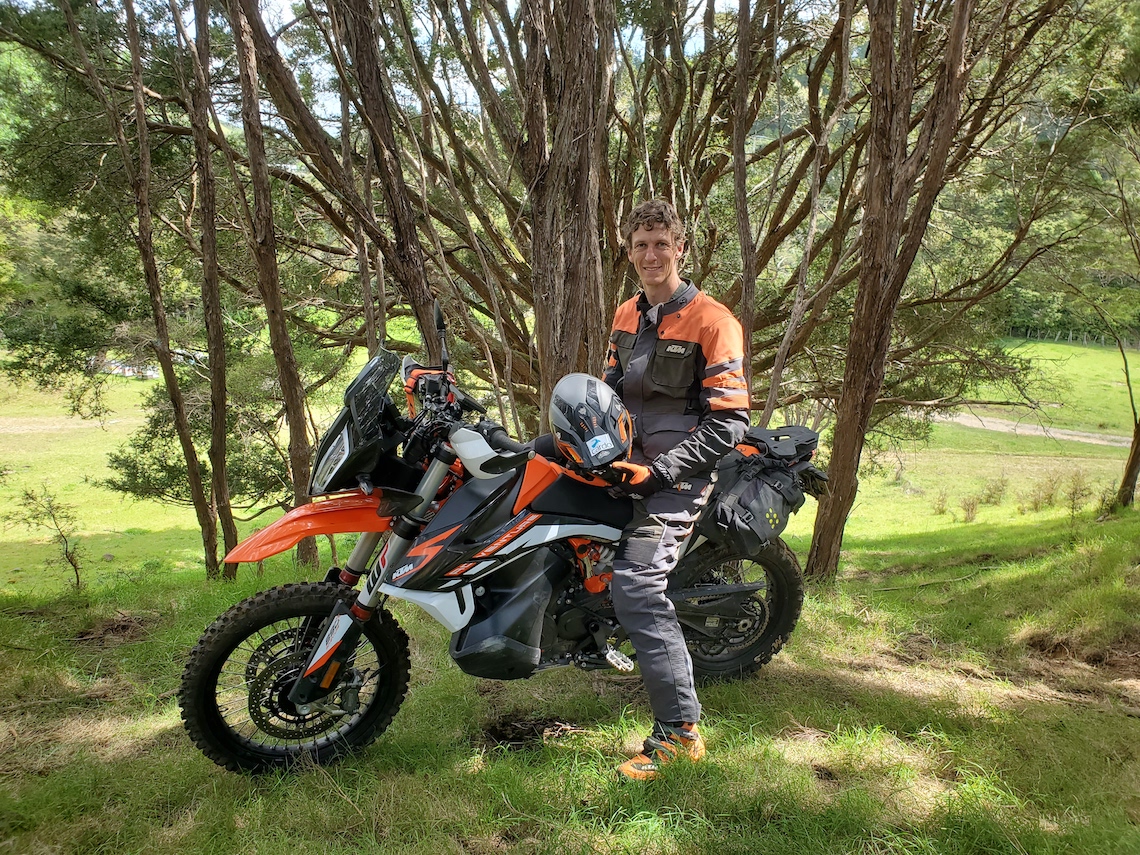
Chris Birch’s top tips for riding a big bike off-road:
- Invest in good off-road tyres
- Start off easy and be patient
- Seek out good advice
- Kit out your bike, and yourself, with the correct protective gear
- Did I mention, invest in good tyres!
- Slow down in the dust…
- Get plenty of practice in
- And, finally, enjoy it!
Mitas adventure tyres
When you’re venturing off-road there are few things more important than the rubber fitted to your adventure bike. That’s why Chris is sponsored by tyre manufacturer Mitas.
After all, in his own words: “You wouldn’t expect to go hiking in dancing shoes, so make sure your bike is similarly well-equipped!”
While Chris favours the aggressive E12/E13 tyres for his off-road jaunts, I’ve recently found myself riding with the E-07 adventure tyres, which offer a 50/50 on- and off-road focus. You can read my thoughts on them after 4,000 miles here.

